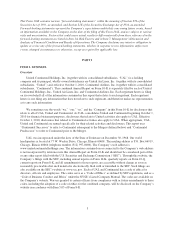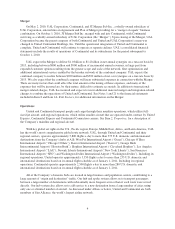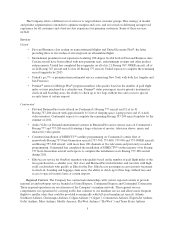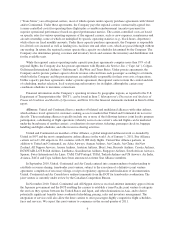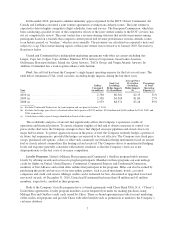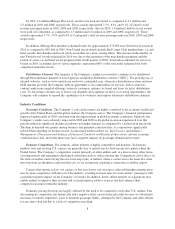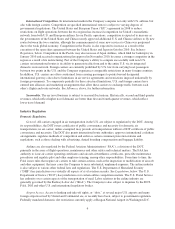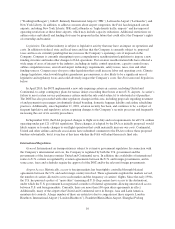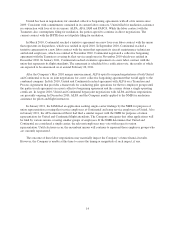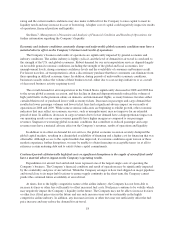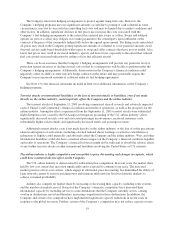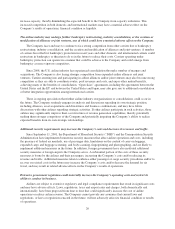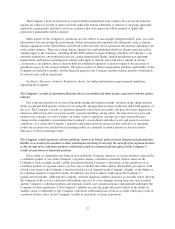United Airlines 2010 Annual Report Download - page 14
Download and view the complete annual report
Please find page 14 of the 2010 United Airlines annual report below. You can navigate through the pages in the report by either clicking on the pages listed below, or by using the keyword search tool below to find specific information within the annual report.In addition to current regulatory programs, there is also the potential for additional climate change
regulation. In 2010, the Administrator of the U.S. Environmental Protection Agency (“EPA”) found that current
and projected concentrations of greenhouse gases in the atmosphere threaten the public health and welfare.
Although legal challenges have been initiated and legislative proposals are expected that may invalidate this
endangerment finding (and/or the EPA’s assertion of authority under the Clean Air Act), the finding could result
in EPA regulation of commercial aircraft emissions.
Further, the ICAO recently signaled through an ICAO Assembly Resolution that it will be developing a
regulatory scheme for aviation greenhouse gas emissions. There could be other regulatory actions taken in the
future by the U.S. government, state governments within the U.S., foreign governments, or through a separate
United Nations global climate change treaty to regulate the emission of greenhouse gases by the aviation
industry, which could result in multiple schemes applying to the same emissions. The precise nature of any such
requirements and their applicability to the Company are difficult to predict, but the financial impact to the
Company and the aviation industry would likely be adverse and could be significant, including the potential for
increased fuel costs, carbon taxes or fees, or a requirement to purchase carbon credits.
Other Environmental Matters. In addition, the DOT allows local airport authorities to implement procedures
designed to abate special noise problems, provided those procedures do not unreasonably interfere with interstate
or foreign commerce or the national transportation system and do not conflict with federal law. Some U.S. and
foreign airports, including airports located in certain of our hub cities, have established airport restrictions to
limit noise, including restrictions on aircraft types to be used and limits on the number and scheduling of hourly
or daily operations. In some instances, these restrictions have caused curtailments in services or increased
operating costs, and could limit our ability to expand our operations at the affected airports.
The airline industry is also subject to other environmental laws and regulations that require the Company to
remediate soil or groundwater to meet certain objectives and which may require significant expenditures. Under
the federal Comprehensive Environmental Response, Compensation and Liability Act, commonly known as
“Superfund,” and similar environmental cleanup laws, generators of waste materials and owners or operators of
facilities can be subject to liability for investigation and remediation costs at locations that have been identified
as requiring response actions. The Company also conducts voluntary environmental assessment and remediation
actions. Environmental cleanup obligations can arise from, among other circumstances, the operation of aircraft
fueling facilities and primarily involve airport sites. Future costs associated with these activities are currently not
expected to have a material adverse effect on the Company’s business.
12



